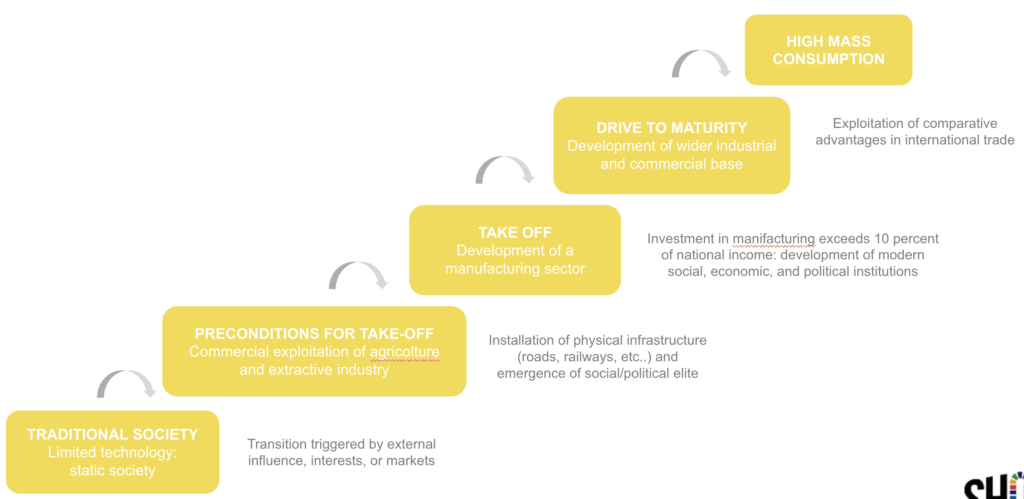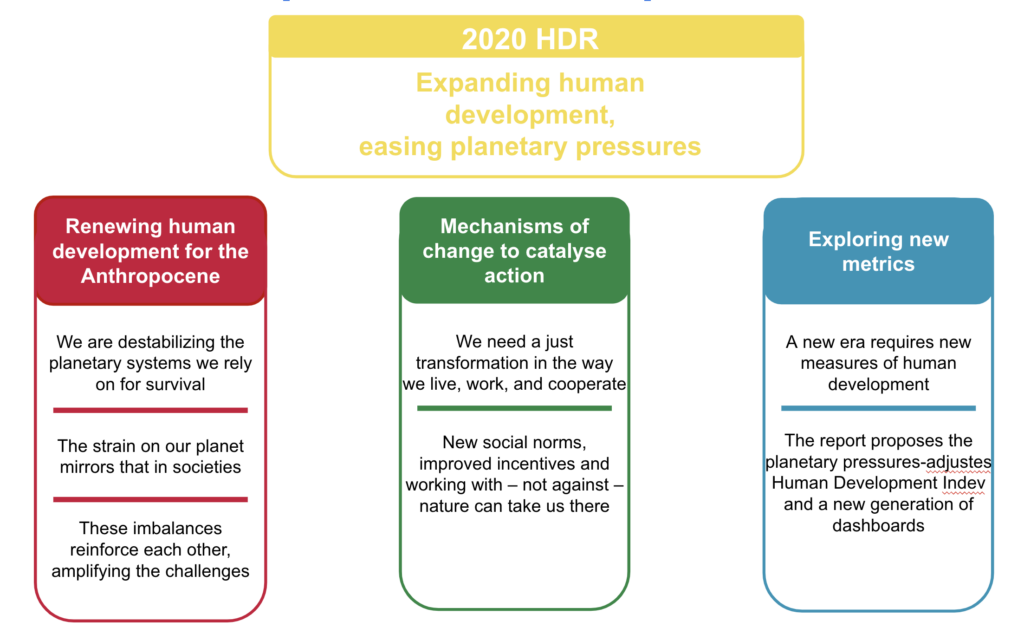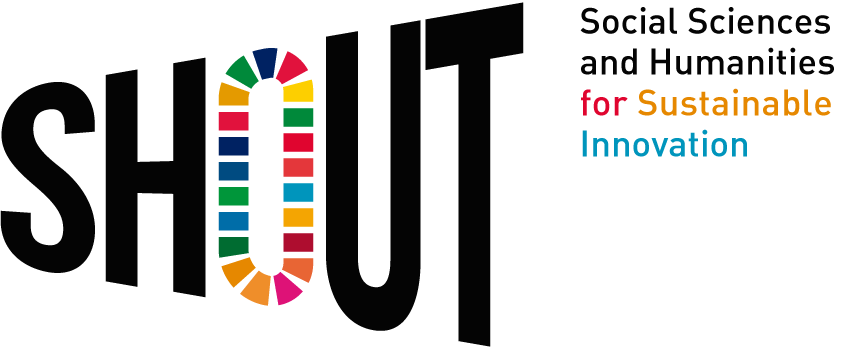The 1950s & 1960s
During the 1950s and the 1960s, development was seen as something «natural», that would ultimately happen to all countries if these were to follow the guidance and example set by those «developed». This one-size-fits-all approach is probably best encapsulated by economist Walt Rostow’s theory of Modernisation, in which it was argued all societies would develop through a series of pre-defined stages.
A number of different theories on development emerged throughout the following decades, with development having become a central element in the context of the Cold War and the division of the World in two blocks, each trying to attract as many countries as possible under its sphere of influence.From the every outset, critical voices to the mainstream idea of development as synonym of economic growth emerged, especially within Latin American and Asian countries. The dominant economic model on which the idea of development was mainly based, was also challenged.
Source:TheConversation.com
Walt Rostow’s theory
of Modernisation

The 1980s
In the 1980s, different perspectives on development started to emerge, emphasising different aspects such as genderequality, the environment and human rights, shifting the focus from pure economic growth and laying the basis for the concept of Sustainable Development as we know it today. Particulary relevant is the work of Indian activist and scholar Vandana Shiva, who analysed the instrinsic correlation between gender, development ant the environment, whilst challenging the dominant definition of development as unsustainable and unfair. Between the 80s and the 90s, economist amatya Sen played a central role in defining Human Development in term of capabilities and freedoms. In 1983, the UN instituted the World Commission on Environment and Development (also known as a Bruntland Commision), which was tasked with the identification of issues and possible solutions related to the environmental and development problems registered at that point. The Commission produced, in 1987, the famous report «Our Common Future», defining Sustainable Development and its elements for the first time.
“It is hardly surprising, therefore, that as GNP rises, it does not necessarily mean that either wealth or welfare increase proportionately […]; in actual fact, there is less water, less fertile oil, less genetic wealth as a result of the development process.“
Vandana Shiva, Staying Alive: Development, Ecology and Women, 1989
The 1990s
It was not untill the 1990s, however, that the concept of development as pure economic growth was challenged at institutional level with a shift in focus towards Human Development. A strong signal, in this sense was the rease, by the United Nations Development Programme of the first Human Development Report in 1990. The report outlines how the development paradigm had not been abl to address huge disparities in income levels, whit the majority of the World’s resources being owned by the richest 20%. Economic growth han not been able to address the unequal distribution of wealth.
The Un Conference on Environment and Development in 1992
An important milestone is represented by the UN Conference on Environment and Dvelopment, held in Rio de Jainero in 1992. Also known as the 1° Earth Summit, the conference officially addresses the topics of environment and development as interrelated, to find a common path towards sustainable production after the end of the Cold War era. The Conference produced a number of outcomes, most notably the creation of a UN Commission on Sustainable Development and the definition of Agenda 21, a UN action plan towards the achievement of Sustainable Development.
Earth Summits in Joannesburg & Rio
Other two Earth Summits werw organized in Joannesburgh an once again in Rio fort the 100 th and 20 th anniversary of the first event, respectively, reaffinrming the commiyments of governments to pursues Sustainable Development through the implementation of policies, action plans and allocation of resources.
In 1990 was created the Human Development Index (HDI) in the frame of the United Nations Development Programme (UNDP), in order to shift the focus of development achiviements from economic growth to the people aand their capabilities. The HDI is based on a series of indicators encompassing the dimensions of Education, Life Expectancy and Income. Each year, the UNDP publishes a comprehensive Human Development Report, avaible in different formats, whic data from alla countries.
The 2020 Human Development Report (HDR) doubles down on the belief that people’s agency and empowerment can bring about the action we need if we are to live in balance with the planet in a fairer world. It shows that we are at an unprecedented moment in history, in which human activity has become a dominant force shaping the planet. These impacts interact with existing inequalities, threatening significant development reversals. Nothing short of a great transformation – in how we live, work and cooperate – is needed to change the path we are on. The Report explores how to jumpstart that transformation.
The 2000s
Actors re-affirm their commitment to fight poverty and protect the environment.
The Earth Summit of Rio in 2012
The Earth Summitof Rio 2012 produced the declaration «The Future We Want», reaffinrming the principles laid out in Agenda 21 and settinf the basis for realisatio of the Agenda 2030 for Sustainable Development, launched 3 years later, during the UN Sustainable Development Summit, at the end of the implementation period of the Millenium Development Goals.
The UN Sustainable Development Summit in 2015
The Commission officially launchs the 17 Sustainble Development Goals
The Human Development Report 2020

